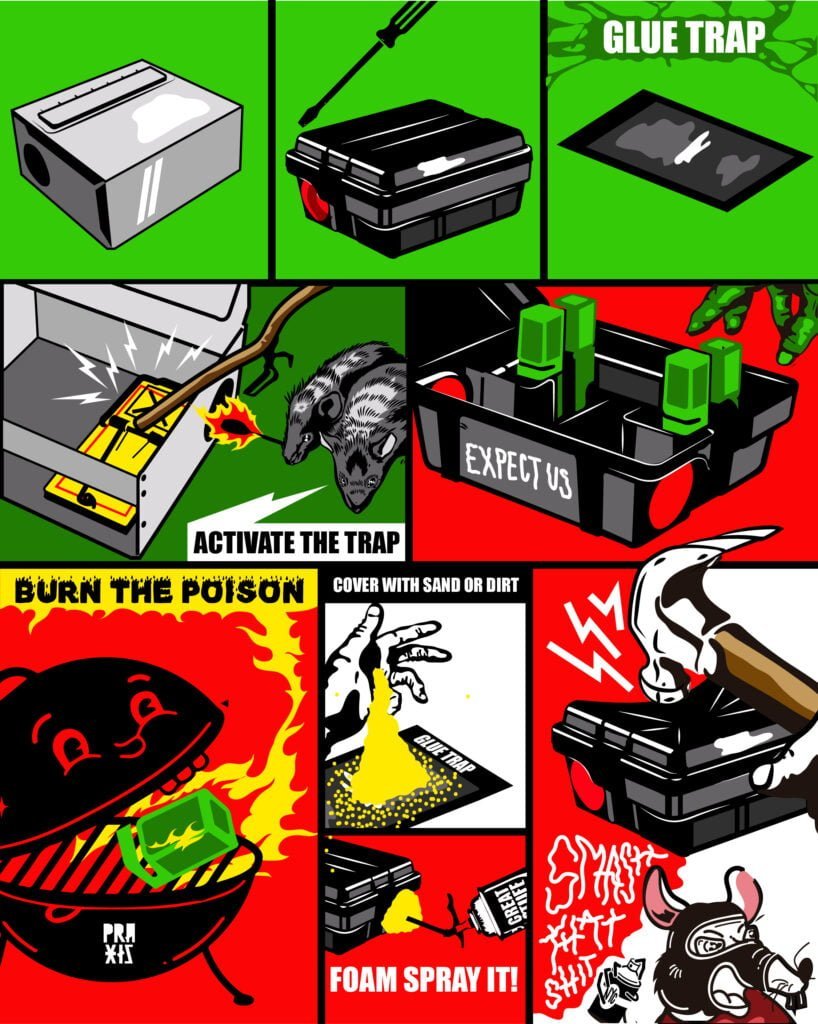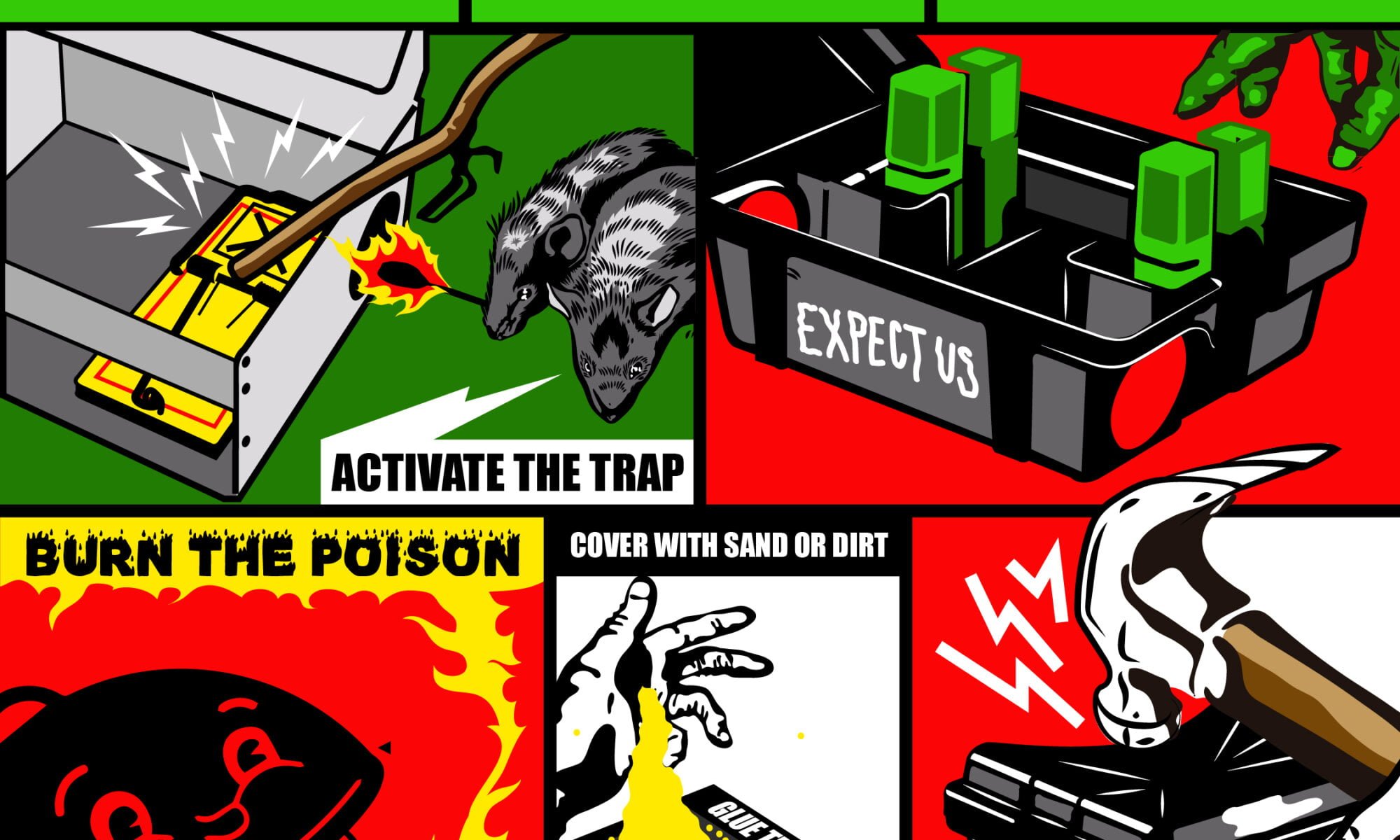Disclaimer for the feds: Incite, Conspire, Inspire is a solely-for-fun section never designed to give real advice. The tools, tactics and ideas given on the series are only thought to entertain. We would never dream of anyone using any of this tools as a form of dissent and we do not promote, partake in or condone any illegal activities that might derive from said tools.

Environmental health forces us all to put rat traps down when having a food related business. How can you deal with them once you’ve had your inspection? Today, we talk about rat traps!
We’ve all seen them. Tucked in a corner, under furniture, or attached with cable to a wall. Made out of metal or plastic, they usually have rat sized holes on either end.
Rat traps tend to litter the landscape everywhere, and in this article, we will discuss how you can deal with YOUR OWN rat traps once you’re done with them.
If they are attached via a wire to something, then wire cutters might be useful to remove them. Once you have them in your possession, your next step is to open them. Sometimes they open easily, but sometimes you might need a 4 way key or a screwdriver to pry them open. If plastic, they can often be opened by placing them sideways and stomping on the seam. Once they are open, you need to inspect inside.
If they have a weird colour block, or maybe some wheat looking grain, usually dyed red, that is a poison trap. Poison needs to be disposed by burning, as putting poison in the bin will just send the poison somewhere else where a different rat population might live and eat it.
You can do a BBQ one day, or you can put it in a dog poo bin if your local council disposes of dog poop by burning and not by composting.
If they have sticky paper, that’s a glue trap!!! You can put those in the bin, but before you do, make sure you cover all the glue with sand, dirt, or any other granular material that will ensure all the glue is no longer dangerous to anyone.
Lastly, you might find the notorious spring traps, which get set off and are supposed to break the spine of any small animal. All you need to do with those is set them off before disposing.
If the boxes that house the murdering devices are plastic, a good kick works wonders to make them less useful. If they are metal, they might need a hammer!
If by any chance you are unable to remove the traps because you can’t cut the wire or you’re unable to open them to check if there is poison inside, remember that expanding foam sprayed into the holes will ensure whatever is inside stays inside and all the animals outside stay protected from the trap when you put it in the bin!
Now you know how to deal with YOUR OWN rat traps. Don’t do this to other people’s traps. That would be illegal.


